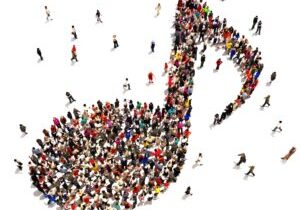 As has often been said, one man’s trash is another man’s treasure. A variant on that old saying is that one man’s problem is another man’s solution. In this case, we’re talking traffic.
As has often been said, one man’s trash is another man’s treasure. A variant on that old saying is that one man’s problem is another man’s solution. In this case, we’re talking traffic.
Billions are being spent to relieve the residual problems that come from traffic jams and congested highways and thoroughfares. Experts dream up and calculate solutions to these urban and suburban snarls that include autonomous cars, smart cities, mass transit, shared mobility, and other technologies designed to give us precious time back while saving energy and helping alleviate the climate crisis.
While virtually every industry, organization, and activity views auto traffic as a civic problem that merits political and legislative attention, it is only in radio where traffic is a welcome condition of what has become “drive time” in the U.S. for coming up on a century. In radio, traffic is our friend. The more the merrier, the worse the better, and any other cliché that reinforces the notion that when it comes to radio listening, our hope is that more and more drivers will be stuck in their cars in hellacious traffic, desperately looking for ways to be entertained and informed, while hopefully helping hapless drivers feel better.
While the effects of COVID continue to fade in so many ways, our changing work venues are still very much a topic, especially in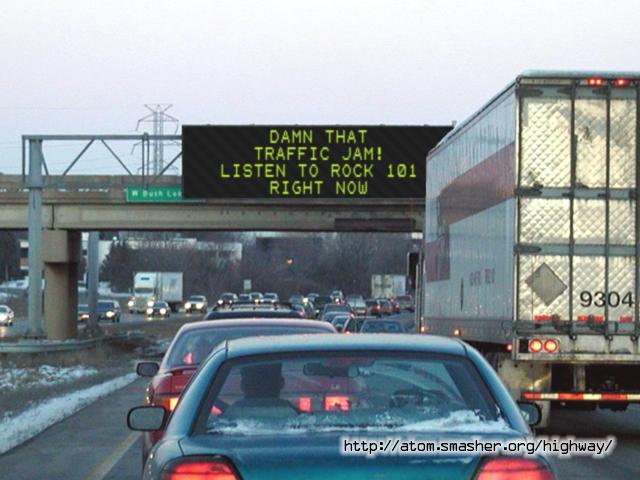 radio circles – where it matters. It starts with the commute in morning drive, a weekday ritual experienced by millions of workers – regardless of socio-economic status – throughout the U.S. Sure, the roads are more congested in traffic-swollen New York City, Chicago, Atlanta, and L.A., but medium and smaller metros also experience their share of traffic snarls, jams, and the inevitable crashes that exacerbate what are already challenging situations.
radio circles – where it matters. It starts with the commute in morning drive, a weekday ritual experienced by millions of workers – regardless of socio-economic status – throughout the U.S. Sure, the roads are more congested in traffic-swollen New York City, Chicago, Atlanta, and L.A., but medium and smaller metros also experience their share of traffic snarls, jams, and the inevitable crashes that exacerbate what are already challenging situations.
Over the years, a long commute went hand in hand with an improved economy. When business thrives, jobs are plentiful, compensation rises, traffic gets worse. And while some of the technologies mentioned earlier in this post were designed to mitigate decades of bumper-to-bumper, smoggy commutes, the fact is these solutions to the traffic problem are way off in the future before they reach critical mass. For radio, the 21st century meant more of the same, a continuation of the “bad traffic = more listening” math that has guided radio station content creation from time immemorial.
Until COVID.
And since March of 2020, all bets have been off. Early on in the pandemic, many believed we’d return to “normal” when masks and social distancing became relics of a painful past. But that hasn’t happened, and many experts believe it won’t – ever again.
As Stephan Meier, professor of business at Columbia University, explained to USA Today, “We’re never going to go back to a five-days-in-the-office policy.” Many experts agree, and of course, that quantum shift in how America operates impacts the radio business in profound ways. The genesis of today’s post is the continued realization that WFH is not going away and the implications this has on radio today and down the road. This chart from a recent New York Times newsletter says it all:
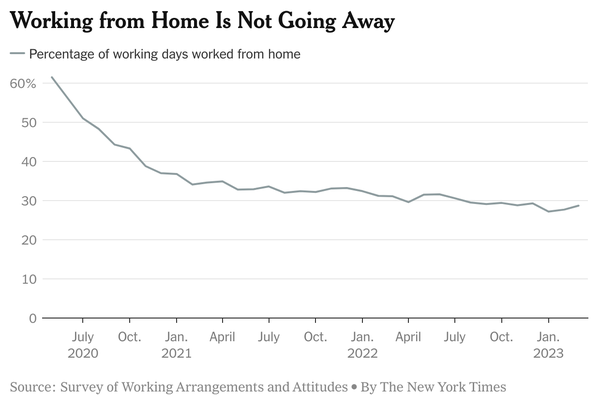
Work-from-home has been a topic on this blog from its very beginnings 4+ years ago. Sure, there was a relatively small percentage of workers, most commonly in the tech industry, who were ahead of the WFH curve. But it wasn’t until COVID when home offices flourished, thanks in no small part to the ease of setting up online meetings on platforms like Zoom and Teams in place of in-person gatherings.
In Techsurvey 2024, fielded earlier this year, we quantified this phenomenon among core radio listeners because it’s a fascinating set of circumstances and because it’s important our stakeholder stations understand how their hometown audiences are being impacted by this important lifestyle shift. The national findings are telling: of those employed full or part-time, more than a third are working out of their homes all or some of the time.
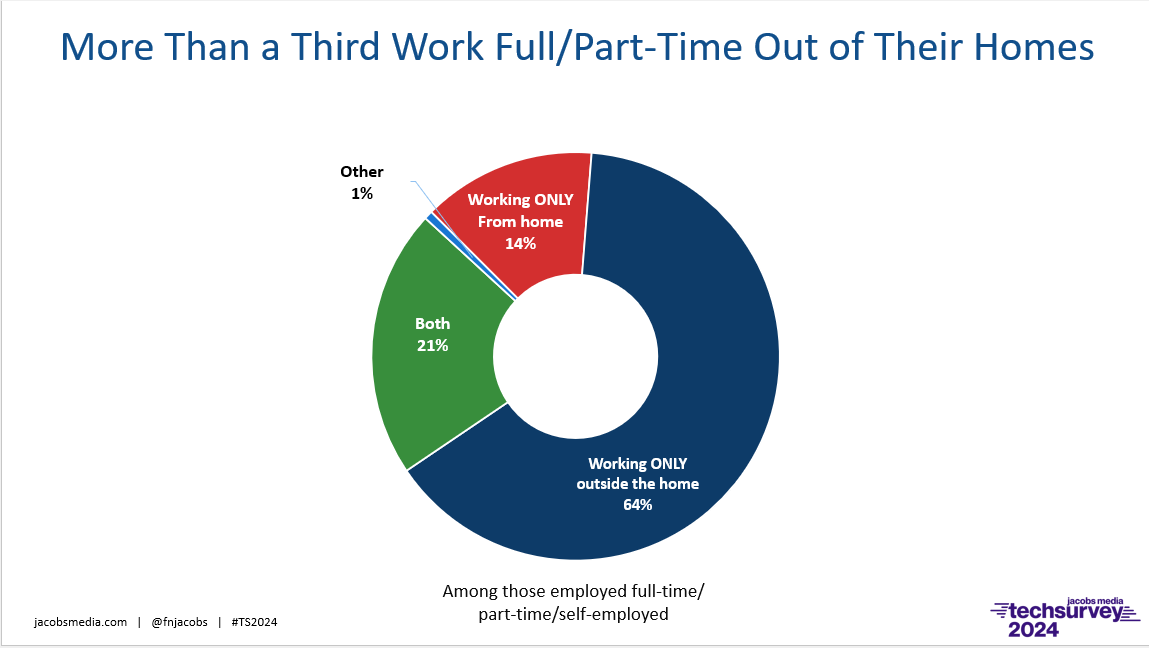
The implication of this is enormous on commuting patterns, and by extension, radio listening. Between fewer people on the roads and more options in growing numbers of dashboard infotainment systems, radio broadcasters are feeling the pressure. When your #1 listening location is profoundly disrupted, the industry-wide reverberations are powerful.
As many suspected early on during the pandemic, the workday for many Americans was shifting to later in the morning hours. While some broadcasters moved their morning shows from the traditional 6am-10am Arbitron/Nielsen daypart to one hour later, that turned out to be a short-lived trend. Maybe it shouldn’t have been.
Data from INRIX (more on them in a bit) reported last week in Sherwood News points to the net effect of a midday commuting surge while the traditional morning drive daypart is greatly diminished. The dayparts listed on the other chart below are the same as the ones we use in radio.
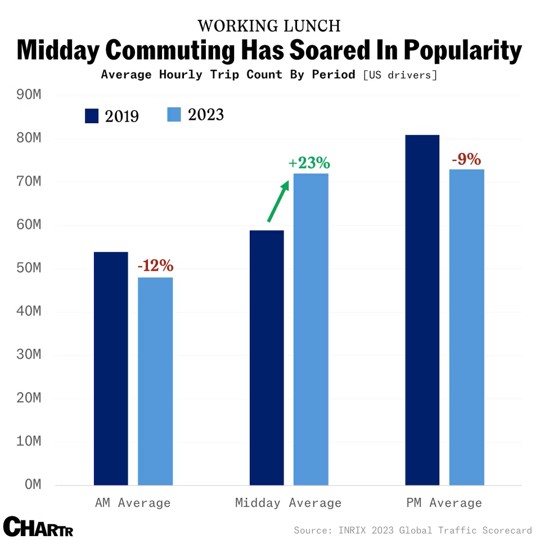
via Sherwood News
But there’s more to the chart when you look closer. The length of an average trip is now as long in midday as it is in afternoon drive. And amazingly, mornings now represent the shortest commute time, thanks to the shift to WFH and more flexible working arrangements.
This information originated in a fascinating report by INRIX, a company founded 20 years ago that studies traffic management using data and insights. I downloaded their “2023 INRIX Global Traffic Scorecard (recently updated for Q1 2024)” to better understand their findings.
It is loaded with great insights for urban traffic managers – and radio programmers and sellers. There are congestion maps by city that are revealing.
Here are a couple of charts that grabbed me, especially for those of you who track meters and diaries:
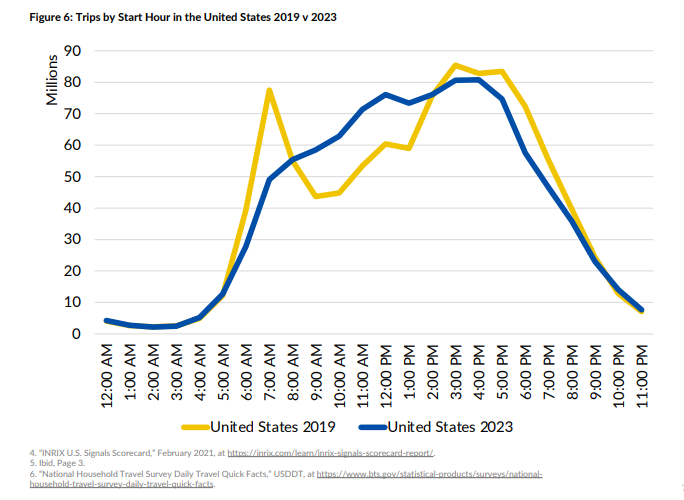
The yellow line represents our world in 2019 and that familiar spike in the 7am hour. The blue line is 2023, and an indication how the script got flipped during the pandemic – and in the years since.
Here’s another that charts the share by days of the week of downtown travel in the US, the UK and Germany:
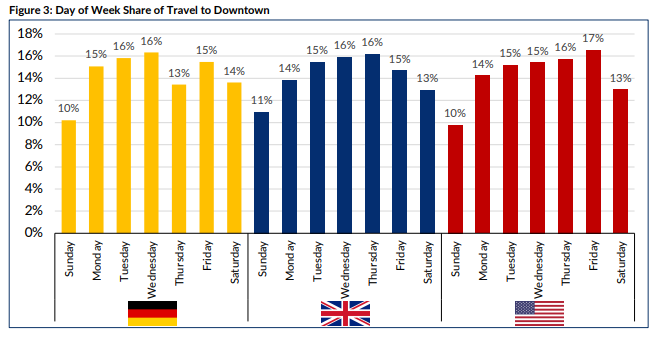
A look at downtown trips in America reveals the two days for less frequent trips to city centers are Sunday and Saturday – no surprise there. But Monday is the third lowest (14%) while Friday represents the apex of journeys to downtown.
Again, your mileage will vary, depending on a number of factors – your metro, of course, but also by variables like age, gender, and ethnicity. This is why including questions that get to these issues is important for your next perceptual research study. My plan is to add similar questions to Techsurvey 2025 launching in January. The map below gives you a glimpse at WFH by state – the darker the shade, the higher the percentage of WFH. And as you can see, it varies – widely. This is another reason why doing the research on your own audience is something every station should undertake.
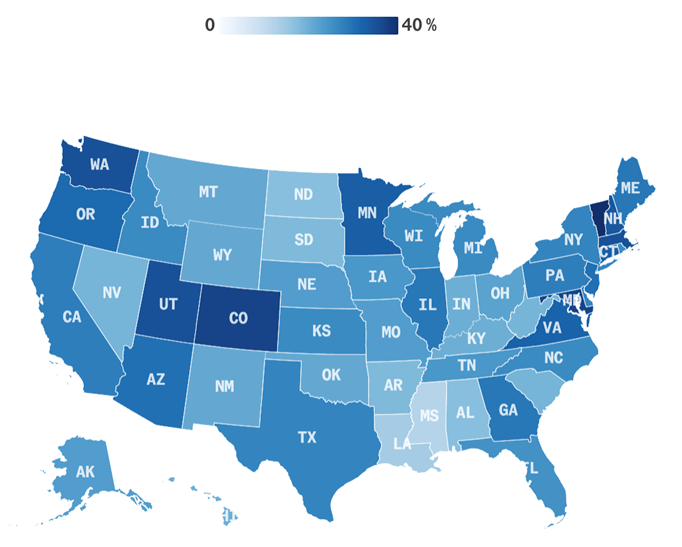
Talk to any Gen Zs in the workforce and they’ll tell you a key factor in selecting their next job is remote work and the ability to manage it. I watched over the shoulder of a young twentysomething the other day, scrolling through LinkedIn openings. Every one included a listing that the ability to work remotely was a feature of these jobs. When it comes to twentysomethings, the work/life balance is one of the top factors that determines whether a job is a good fit. If remote work isn’t flexible or present enough, it could be a non-starter for these young workers:
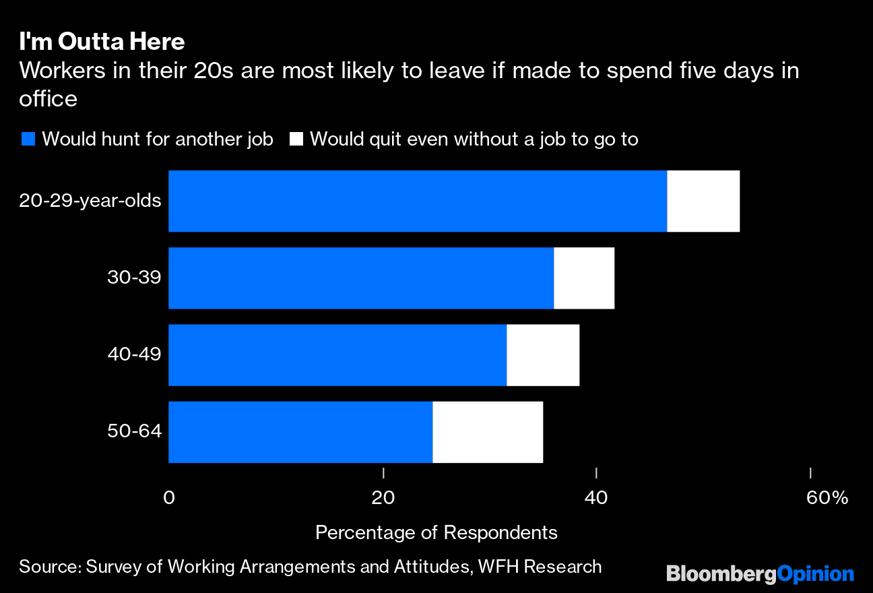
Meantime, it is time to start asking key programming and sales questions, no matter what type of radio operation you’re a part of. Are you running your best shows with your best talent at the most important times? As the shift to midday solidifies, what type of programming do people listening during these hours want to hear?
In public radio – especially for the many stations that air Morning Edition and All Things Considered in morning and afternoon drive (respectively) – how should those midday hours be filled? Is this an opportunity for NPR, APM, and the community of public radio stations to rethink their weekday programming strategy?
Is this an opportunity for NPR, APM, and the community of public radio stations to rethink their weekday programming strategy?
For all of us in the radio ecosystem, understanding these shifts – the commute and WFH and their impact on dayparts and days of the week – and rethinking time-honored “givens” could be important in this post-pandemic reality. Fitting in to changing lifestyles and needs is what radio has always done over decades of serving the majority of Americans.
So, let’s get to work!
Thanks to Jeff Rowe & Chris Brunt for making me aware of this story at nearly the exact same time. – FJ
Originally published by Jacobs Media


